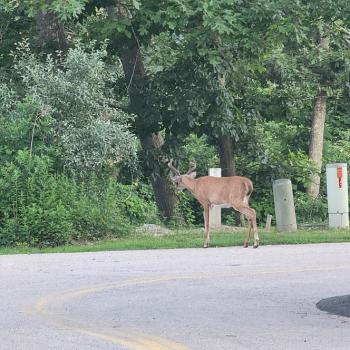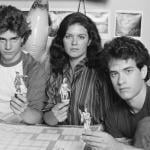 November is a month of transitions. Here in New England, we are squarely in the middle of autumn. To the north where I grew up, the leaves have turned and are already falling; in southern New England where I now live, the leaves are at their most colorful; some of them are already dropping. The predicted high for each of the next ten days is in the fifties, and we will be getting our first freeze of the season soon. Winter is on the horizon.
November is a month of transitions. Here in New England, we are squarely in the middle of autumn. To the north where I grew up, the leaves have turned and are already falling; in southern New England where I now live, the leaves are at their most colorful; some of them are already dropping. The predicted high for each of the next ten days is in the fifties, and we will be getting our first freeze of the season soon. Winter is on the horizon.
November is also the month that for most people marks the transition to the “holiday season” (unless you consider that to have started with Halloween, which I don’t). Thanksgiving is coming soon. A new liturgical year will begin with the first Sunday of Advent on the last Sunday of the month, followed shortly by the Christmas season.
In the academic world, November is the month in which you get serious about planning courses for the upcoming spring semester. In the interdisciplinary humanities course that I am currently teaching with colleagues from the history/classics and the English department, I am responsible for the philosophy component, some of the theology and, given my classical training on the piano, the music lectures. Our focus next semester will be the 20th century and the first two decades of the 21st through interdisciplinary lenses. While I am still considering what to focus my music lectures on, I’m sure that one of the lectures will be a consideration of Benjamin Britten’s War Requiem.

Completed in 1961, War Requiem was first performed on May 30, 1962 at the dedication of the new Coventry Cathedral, built next to the ruins of the old cathedral destroyed by the Luftwaffe in 1940. The score makes a profound statement about the value of human life; its text is a conflation of the Latin Requiem (Mass for the Dead) and the antiwar verse of the English poet Wilfred Owen, who died at the front during the final week of World War I. At the end of the premiere performance, there was a profound silence between the final notes and the applause. It was a triumph, achieving an impact matched by few works in the twentieth century. Writing to his sister after the premiere, Britten said of his music, “I hope it’ll make people think a bit.” I hope it will make my students think a bit as well.
An industrial city in the West Midlands of England, Coventry was the target of numerous Luftwaffe bombing raids. The worst of these occurred on November 14, 1940; the devastation included the almost total destruction of Coventry’s gothic Saint Michael’s Cathedral that was built during the late 14th and early 15th centuries.
Various researchers revealed some decades later the likelihood that because the German secret “Enigma” code had just been broken by cryptographers at Bletchley Circle, British war authorities knew that Coventry had been targeted for a Luftwaffe fire-bombing raid some days before the raid occurred. These authorities chose not to alert the citizens of Coventry ahead of time because doing so would have revealed to the Germans that their supposedly unbreakable code had been cracked. Sir William Stephenson, the chief of all Allied intelligence during WWII, wrote that both Franklin Roosevelt and Winston Churchill were aware that Coventry was going to be bombed; Churchill reportedly told Stephenson after the war that letting Coventry burn aged him twenty years.
Others have challenged Stephenson’s story, but situations in which seeking to achieve the good is entangled with destruction and death are disturbingly commonplace. A new Coventry Cathedral was built next to the ruins of the one destroyed in 1940, incorporating into its modern architecture the remains of the previous edifice as a testament to both hope and despair, triumph and sacrifice.

The theme of the 1962 dedication, of Britten’s War Requiem that premiered at the dedication, and the continuing ministry of St. Michael’s Cathedral to this day is reconciliation. The cathedral’s artwork, commissioned from all over the world, makes use of remnants of the old cathedral as well as materials not usually incorporated in religious art—the wreckage of automobiles, refuse from landfills—the last places we normally look for intimations of the sacred.
Paying attention to the Christian narrative reveals that the planners and parishioners of the cathedral in Coventry are on to something. When the divine enters the world, we may often look in vain for immediate evidence. Violence and suffering still occur, human beings continue to perpetuate atrocities on each other and on the world in which we live. The difference before God enters human reality and after is so subtle as to often be unnoticeable. But as a wise person once told me, this is not a God who intervenes. This is a God who indwells.
In his lengthy Christmas poem “For the Time Being: A Christmas Oratorio,” W. H. Auden expresses this sentiment through Simeon, the old man who gets to see the infant Jesus just before he dies.
And because of His visitation, we may no longer desire God as if He were lacking: our redemption is no longer a question of pursuit but of surrender to Him who is always and everywhere present. Therefore, at every moment we pray that, following Him, we may depart from our anxiety into His peace.
Anxiety and fear are natural human responses to evil and suffering. But as we move toward the Advent and Christmas seasons, we would do well to remember one of the names of the promised Messiah—Immanuel—means “God is with us.” With us not only in joy but also in sorrow, not only in new birth but also in death and destruction.
In the darkest depths of despair, the promise is that God is with us, choosing to become part of the mess and transform it from within rather than impose solutions from the outside. As I heard someone say not long ago, “we need to stop listening to fear and calling it wisdom.” At the heart of the beautiful and transformative story is, as Winston Churchill might have described it, “a mystery wrapped in an enigma.” We are called to embrace hope when things are darkest. We are not alone.













